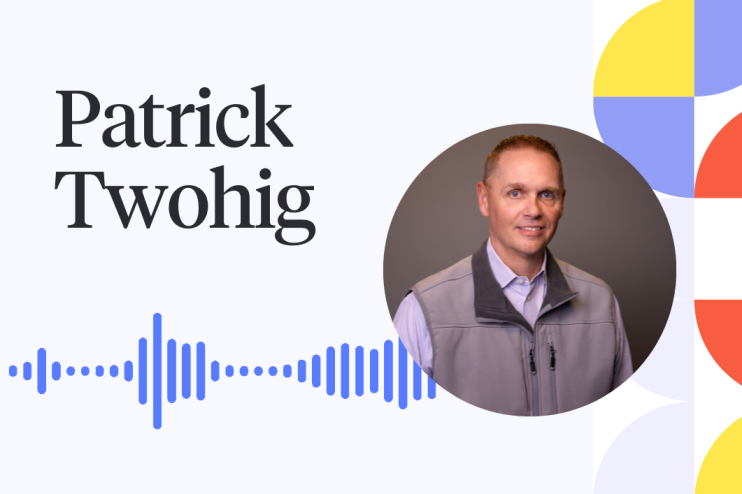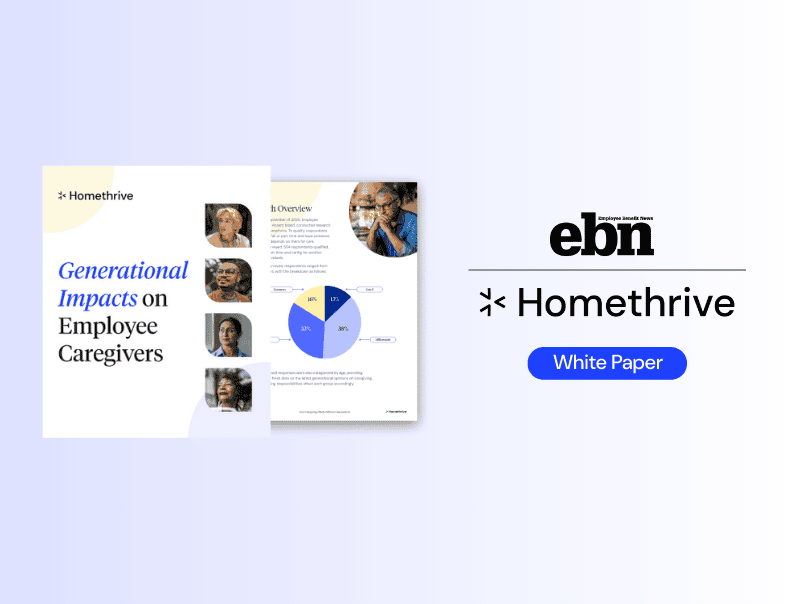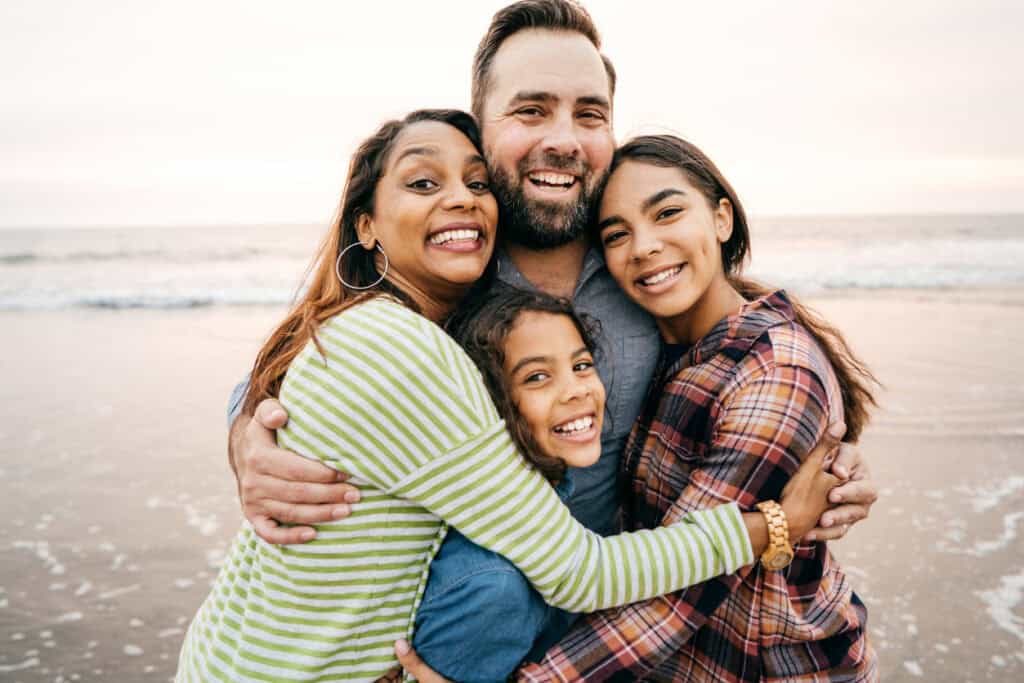Ali Habashi: So when I think of company benefits, I think of what most people probably do. Health, dental, vision. Maybe if I’m lucky, stock options and a discount at the nearby gym. However, what was considered a decent benefit package 20 years ago won’t necessarily measure up 20 years down the road.
You’ve been speaking to HR and company leaders for a while now. What are some of the benefits that companies are beginning to explore, and how will they help the next generation of workers?
Patrick Twohig: That’s a great question. Before I even mention the benefits, I think the number one thing that most organizations are looking at right now is health care spend.
Health care spend continues to increase, but organizations are really trying to improve and at least maintain the same type of benefits that they’ve had in the past. When I say the past, I’m talking about the past three or four years because to your point, they have changed. I’d say as far as a benefit goes, whole person health is talked about early and often.
And when I say whole person health, I’m talking about physical, mental, social and financial health across all generations, whether it’s X, Z, or boomer. Organizations are really focused on having a benefit offering that that meets all their needs and meets that employee where they are in their journey
Ali: Makes sense. Now are there any specific benefits that you’ve come across multiple times that people ask you about?
Patrick: Absolutely, and this probably won’t be much of a surprise, but GLP-1 right now is very popular. Weight loss, cancer treatments. We hear a lot about family formation, everything from fertility and to adoption.
And lastly, caregiving. And I use that in a very broad sense in caregiving and everything that comes with it. It’s really gaining steam over the past year, two years.
Employees are taking surveys now and it’s popping up in the top three things that they’re actually asking for. And surprisingly to many people, it’s across all generations. People automatically assume it’s the X generation, but it’s millennials, it’s Gen Z, because caregiving means so, so much to so many different people.
Ali: You said it’s coming up in the top three. What are the other two?
Patrick: Well, number one, mental health. Mental health is and will be. I think, this again won’t be much of a surprise, but COVID kind of pulled back the curtain on Oz, if you will, and it shed a light on a lot of the issues that current employees have.
And whether it’s something as simple as dogs barking in the background, children running through the Zoom phone calls, or the fact that people were taking care of their parents at home…
It became okay to not necessarily be okay. Which is a great thing. And employees today really have put an emphasis on mental health and the demand for mental health offerings from their employers. And to the credit to employers, they’re investing heavily in it. And caregiving goes hand in hand with that.
You know, we say at Homethrive, you can’t solve for mental health without solving for the caregiver burden.
Ali: Oh yeah, I think wellness is a giant part of what we do and I know that emotional support is sometimes the thing that people come to us for.
Patrick: Absolutely it is, and you know, we believe in the airplane mask analogy. You can’t take care of your child on the airplane until you put the mask on yourself.
The same thing applies to caregiving. You need to take care of yourself in order to take care of others. Caregivers have a higher rate of depression and a higher rate of anxiety. And there’s a cost to that too. There’s a financial cost to the employer with that.
And when you talk about productivity and retention, caregiving is the number two reason why employees are leaving the workforce today. Number two. The number one reason is voluntary retirement.
I think employees are more apt to tell the truth today, as opposed to five to 10 years ago. Today if they have to take their father or mother to a doctor’s appointment or they’re looking at a skilled nursing facility, they could tell their employer that you couldn’t do that five to 10 years ago.
You’d have to make up a lie and say you were sick, or you had a doctor’s appointment yourself. But to the employer’s credit, they’re listening and they’re hearing this from their employees and they understand that the stress and burden that comes with caregiving. It does impact the employee’s ability to bring their whole self to work and that’s what really, that’s what they’re shooting for.
Ali: You mentioned mental health as well, and I feel like that’s the other thing that people will take time off for and actually be transparent about now. I think when you needed a mental health day back in the day, you would just say, I’m sick and I’m going to stay home.
Now I think people are much more upfront with statements like “I need a mental health day.”
Patrick: I couldn’t agree more. It was taboo to say something like that five years ago. I can’t imagine going to my employer back then and saying, “I need time off just to regroup.” But the stress of life is real.
The stress of caregiving is real. And it’s exhausting. I say it all the time. Caregiving for my father was the hardest, greatest thing I ever did, but it sure as heck was the hardest.
Ali: Alright, so, zooming in now on Homethrive’s specialty and your specialty: caregiving benefits. The family caregiving population in the U.S. is over 51 million strong. And that number is only growing as our population continues to age at an unprecedented rate. So I’ve got an easy one for you. What are caregiving benefits and how do they serve caregivers?
Patrick: That’s not so easy, Ali. Caregiving means something different to every person, every generation.
It could be as simple as childcare, and it could be as extreme as hospice care. But there’s a lot of living in between. So what I always say is caregiving could be special needs children navigating an IEP, LGBTQ plus support, veteran support, navigating Medicare. For certain generations of certain people, it could be pet care.
It could be navigating student loans for teens. It really depends on the individual, what caregiving means, but what I always say is it’s support and it’s navigation and people always need that. On average a caregiver spends over 21 hours a week on caregiving duties.
And again, it won’t surprise you that the majority of those hours are between eight and five when they’re supposed to be at work and focused and bring their whole selves to work. That’s why employers are looking at this, because you think about the lost productivity because you can’t schedule doctor’s appointments at nine o’clock at night.
You’re doing that in the morning. You can’t go visit long-term care facilities or try to schedule home health at night. All this is done during the workday. And the whole goal, again, coming back to mental health, the whole goal is to remove that burden and let the employee focus on work.
So in addition to productivity, it’s something that an organization can get out of their employees who do have caregiving benefits.
Ali: Are you seeing that caregivers are also in leadership positions at companies?
Patrick: Oh, absolutely they are. And I’ll tell you a funny story.
I called on a large hospital system about seven months ago. I was meeting with the CFO, and he was about 10 to 15 minutes late for the meeting, came in, apologized. He really didn’t know who I was or who Homethrive was. but he came in, he sat down and he said, “I’m sorry.” He said, “My father is being discharged from the hospital and I was arranging all his transportation.”
He said, “I have no clue what I was doing. I apologize. I have to cut this meeting short.” I only have 15 minutes, but I’ve never been set up so well before in my life. And he said, “So exactly what do you do?” And I said, “Well, I’m here to help you.” And he just looked at me and I explained our services, explained the support and I told him he’s not alone because there’s so many caregivers out there in the world. And his eyes just lit up and I’m glad to say we were able to support that gentleman.
From a statistical standpoint, 73% of all employees are dealing with some type of caregiving responsibility.
It disproportionately impacts women, 61%-63% of caregivers are female, and it disproportionately impacts minorities. So whether you’re a frontline worker, whether you’re a CEO, caregiving impacts every individual and every generation.
Ali: So we just had an episode not too long ago about the sandwich generation and we’ve mentioned a few times now that you were taking care of your father and you were taking care of your kids as well. So, hey, you’re part of it. So I thought maybe we should touch on that. How was it being a part of the sandwich generation for so long?
Patrick: Exhausting, enlightening. I was brought up in a generation where it mind over matter, and my son taught me a lot about ADHD and the fact that medication is there for a reason.
So again, you’re never too old to learn. But taking care of my father and taking care of my son, first of all, I couldn’t have done it without my wife, on both aspects. But I said earlier, Ali, it’s a full time job, but having the support of my Care Guide at Homethrive definitely helped me out, because I didn’t know how to navigate an IEP within the school system. My daughter jokes that I couldn’t spell IEP. But she got on the phone with the school, with my wife, with myself, and basically led the phone call.
While two days later, she was helping my father get in discharge from a hospital and back into his assisted living. So I mean, the reality, again, it’s that support. It’s that guardian angel that you have, to ease the burden.
Ali: In the grand scheme of things, caregiving benefits are relatively new.
So what are some of the challenges that you’ve faced in communicating what caregiving is, who caregivers are, and the need for these benefits, not only for employers, but for caregivers themselves?
Patrick: I’d say right off the bat, not everyone identifies as a caregiver, even though they are.
And Ali, what I mean by that, and I’ll use myself as an example, you mentioned I took care of my dad for 15 years before he passed a couple months ago. For the longest time, I just thought of myself as his son, or taking care of my son who has ADHD.
I’m his dad. It’s my job. It’s my responsibility. Now, with that said, I’m going to the hospital, sleeping at the ER, or taking off time to go to my son’s doctor’s appointments. I was a caregiver. I am a caregiver. But I didn’t look at myself in that light. And a lot of people don’t.
You think about certified nursing assistants in a nursing home or nurse. But we are all caregivers. And as I said, 73 percent of employees are caregivers and they’re dealing with that challenge. It’s another full-time job on top of their job that they have. So that’s the number one challenge.
I would say this, over the past year and a half I mentioned people are speaking up more and more. COVID has helped break the stigmata of it, if you will. And people aren’t afraid to voice the fact that they need help and they, they need additional support from their employers.
Ali: Now speaking of additional support, I would like to talk a little bit about employee resource groups as well. Can you explain what they are and how they help employees, especially things like caregiving ERGs?
Patrick: I am a huge fan of employee resource groups. They give employees a voice. Whether it’s a LGBTQ+, Hispanic, veterans, and now you’re seeing a lot of caregiver ERG groups, employee resource groups.
Homethrive, my organization, works with them on a daily basis to help support. Especially when it comes to caregiving, because for all those statistics that I gave you, caregiving transcends each and every employee resource group, whether it be disabilities, Hispanic, VA, you name it. There’s a caregiving aspect to each and every one of them. And we’re very fortunate, at Homethrive to be able to partner with organizations, but then reach out and become intertwined with their ERG groups.
Ali: Being a father yourself, you know possibly that your children will also become caregivers one day for someone in their lives. So, what are some of your hopes for the future generations of caregivers?
Patrick: Ali, my children remind me that they’ll be taking care of me on a daily basis.
So I’m going to be nice to them. It’s come a long way, but my hope is it becomes normalized. You know, if you ask me about caregiving three or four years ago, I’d automatically talk to you about my daughter playing softball or my son playing basketball, but I wouldn’t have talked to you about my father having incontinence issues or falling down or having to sleep in the ER.
Over the past year, year and a half, I do share that. In fact, again, I’ll tell you another story. I was talking to a potential customer about a year ago, and we were having the same exact conversation. And I talked about my father and three weeks ago, we had a phone call and one of the first things she said to me, she said, how’s your dad?
And I told her, I said, you know, he just passed. Thank you for asking. She said, and after she gave me her condolences, she said, I remember what you said, and that we should be able to talk about our parents and the challenges. And she said, that’s why I asked you about your dad, because you’re right. It needs to become normalized.
And it meant so much to me that she heard me. So if I have a wish that that’s number one, the reality is by 2050, there’s going to be 80 million people over 65. And we’re not prepared for right now. There’s going to be a caregiver shortage. We need to start looking at healthcare as a whole, but we need to start looking at the support that we’re going to need, not just now, but in the future.



